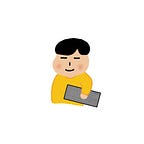Basic Microeconomics Concepts 1
3 min readSep 15, 2020
What is Economics?
- Economics is the study of Efficiency.
Scarcity
- A limited set of resources that must meet an unlimited set of wants and needs.
Opportunity Costs
- The loss of potential gain from other alternatives when one alternative is chosen.
Economic Efficiency
- Minimizing and inefficiency while making choices.
These are the most important values in the study of Economics.
3 Types of Economic Systems
- Traditional Economic Systems: The economic roles that people fill are the same roles that their ancestors filled.
- Command Economic Systems: The Government is the primary decision-maker.
- Market Economic Systems: The economic systems where buyers & sellers, and demand & supply exist.
Production Possibilities Curves (PPC)
- The PPC is always bowed outward.
- The PPC shows us what combinations of goods we can produce when we are using our resources efficiently.
- Point B, C, D, and E: Represent the most efficient choices.
- Point G: Represents an inefficient choice.
- Point H: Represents an unattainable choice.
To reach either Point H or G, there should be some changes in supply.
Here are 5 ways to make a change in supply :
- Cost of production (Ex. Cost of materials).
- Technological changes (Ex. Development in technology).
- A number of sellers (Ex. If the number of sellers increased, there would be more suppliers exist).
- Future expectations about prices.
- Goods using the same resources.
Comparative Advantage
- The concept that in international trade, even if a country’s goods absolutely fall behind to those of the other country, they can maintain a relative advantage in light of the opportunity cost of production.
Demand
Demand
- Willingness to buy
Demand Curves
- Always Downward
The factor that shifts the Market Demand Curve:
- A change in income (*Income Effect)
- A change in tastes or preferences
- A change in the price of other goods (*Complements and Substitutes)
- A change in the expected future price of a good
- A change in consumer information
Income Effect
- The income effect is where a shift in the demand curve happens as the consumer’s income changes.
Normal Goods Vs. Inferior Goods
- A normal good is a good you consume more and more as your income growth
- An inferior good is a good you consume less as your income growth (Relative relationships between Income and Consume)
Substitution Effect
- The substitution effect is where a shift in the demand curve happens as prices of other goods change.
Complement Vs. Substitute
- Complements are goods that are used together; when a change in demand happens to one good, then other will goes the same.
- Substitutes are goods that can be replaced by other goods. It has an inverse relationship to other goods.
Supply
Supply
- Willingness to sell
Supply Curves
- Always upward
The factor that shifts the Market Supply Curve
- Cost of production (Ex. Cost of materials).
- Technological changes (Ex. Development in technology).
- A number of sellers (Ex. If the number of sellers increased, there would be more suppliers exist).
- Future expectations about prices.
- Goods using the same resources.
Law of Increasing Costs
The law of increasing costs indicates that the opportunity cost of producing a good rise as more the good is being produced. This results because of the limited amount of resources. As we produce more goods of A, resources for product B will not be very sufficient; thus, increasing the opportunity cost. Thus, in the end, as we produce more goods, the opportunity cost of producing it will rise.
Market Equilibrium
- Market Equilibrium is the price point where both buyers and sellers perfectly satisfied with the price of a good.
